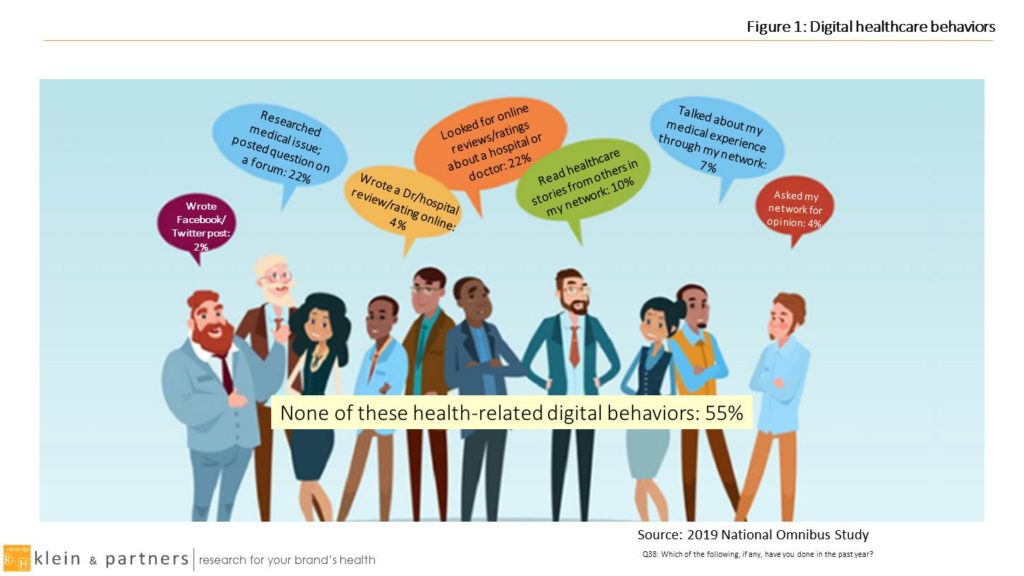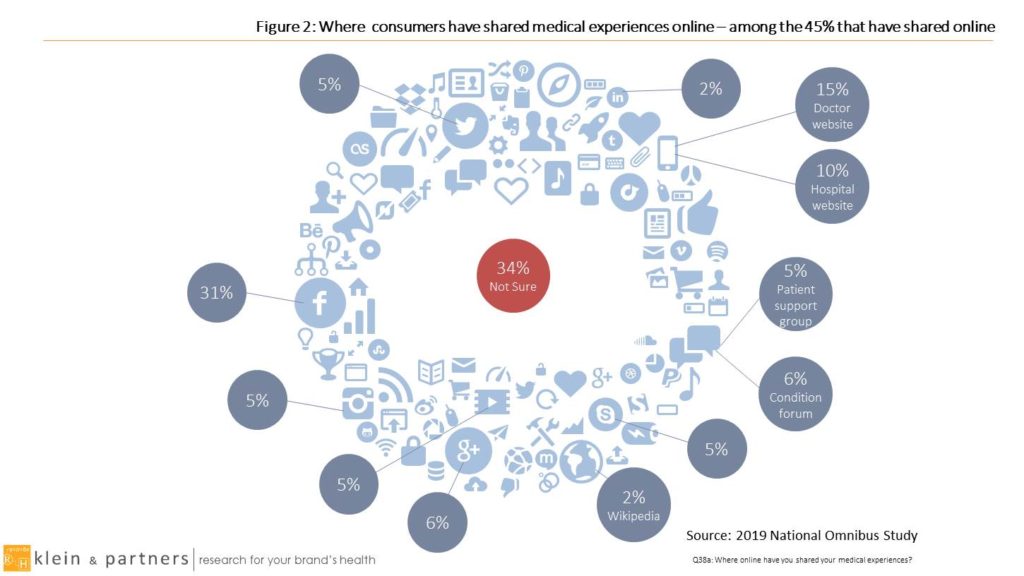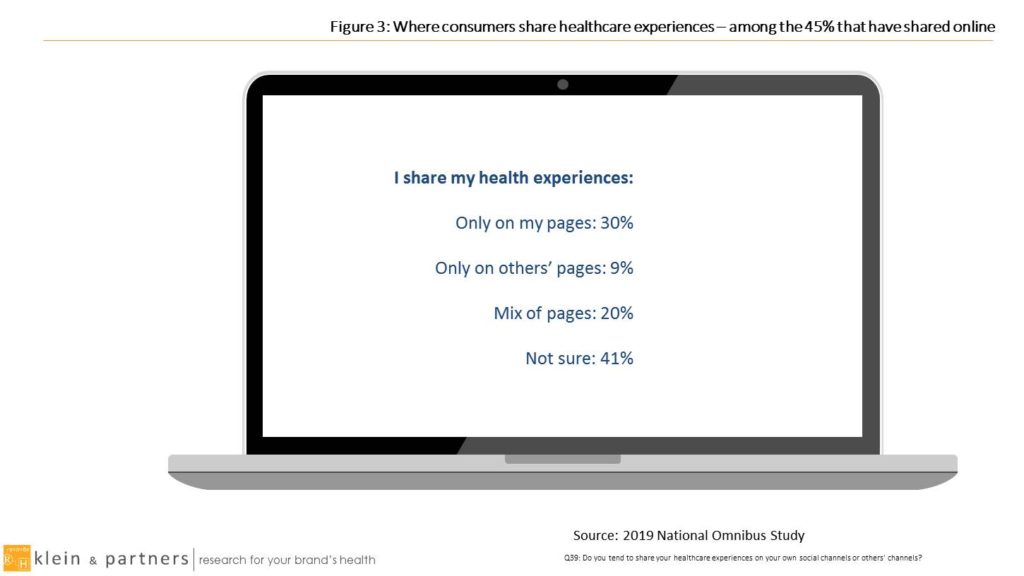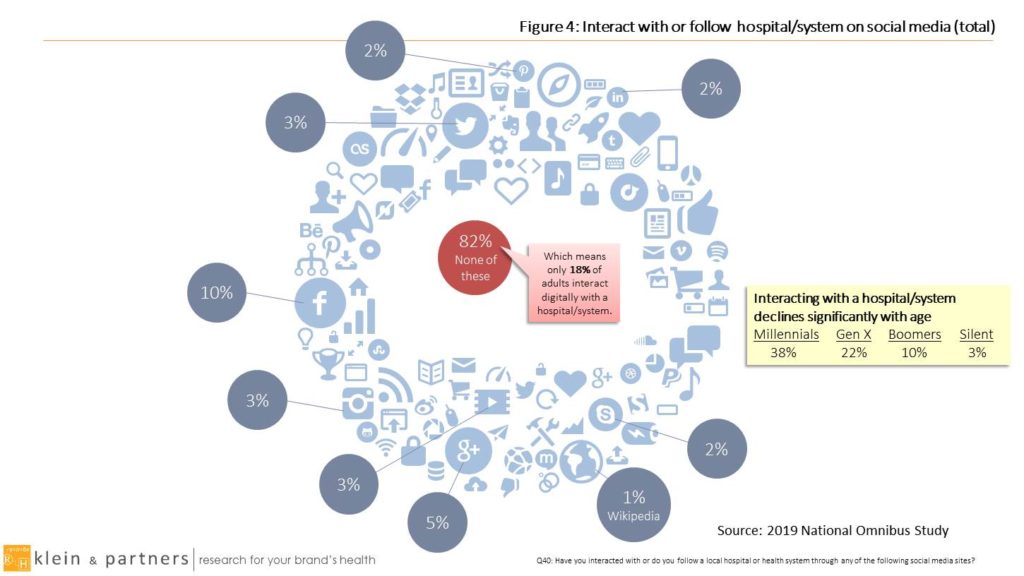By Rob Klein and Dean Browell
Understanding how consumers seek, share, and use healthcare information online is essential for today’s healthcare marketers. A study conducted by Klein & Partners reveals some valuable insights for improving your digital marketing efforts. Following are some highlights.
Sharing Information Online
• Almost half of patients are sharing experiences digitally at a frequent enough pace that they aren’t even sure where they shared them. Further, those patients are informing others who researched a medical issue and posted in a forum, looked for specific ratings and reviews, plumbed their own network for advice, looked for it quietly (by reading others’ stories, for example), or asked questions (figures 1 and 2).


• This confirms that patients are both “lurkers” and “participants” online, not one or the other. Behavior may change based on where they are in the decision path, whether they are searching for answers, personal medical context, or even by channel. Consider that asking a question in front of friends and family on Facebook is very different than asking anonymously on a message board for a very specific condition that is only followed by those diagnosed with the condition (or caregivers). Communities can range from those consumers have been a part of for years, such as local Mom groups, or ones they have only recently joined after a diagnosis.
• When asked elsewhere in the study, 17 percent of consumers said they shared their experiences on a consumer review site. But, when asked to articulate which site or how, the number plummeted to just 4 percent (figure 1). While this may seem contradictory, it may reflect the ubiquity of social sharing displaying as more second nature—whereas recalling exactly where it was shared may be tricky. This may indicate the difference between simply leaving a star rating, hitting the “recommend” button on Facebook, leaving a review on Yelp or Google, or posting a full testimonial on a message board for their condition.
• Among those who share their healthcare experiences digitally, nearly a third share only on their own pages, possibly because of privacy concerns, or they may be interested only in helping those in their own network or circle (figure 3). Conversely, they may be sharing more broadly, but doing so more anonymously. Other studies have found an incredible amount of information-sharing about treatment (including procedures, physicians, and geography) but without personal identifiers, such as last names.

Interacting on Social Media
• While consumers may see a hospital’s or system’s official channels as a place to gather information, this isn’t where they expect to find the unvarnished experiences of peers that they crave before making decisions: 82 percent of consumers do not interact with or follow any healthcare organizations on social media (figure 4).

• Interaction with hospitals on their official social media channels declines sharply as age goes up. While 38 percent of Millennials say they interact digitally with a hospital or health system, only 3 percent of the Silent Generation does so.
• Bringing it all together suggests a clear red flag for marketers: If you’re only looking at how people talk on your official channels, you are missing what patients are saying and how they are informing prospective patients. This is a comfortable trap to fall into, especially now that the primary social channels have been around for several years and likely through multiple handlers internally: organizations get comfortable with their content and, more importantly, levels of engagement. Keep in mind that those who participate on your owned social channels (outside of reviews) are likely only a subset of your total audience and may not be representative. Most patients don’t really want to interact, so don’t be tempted to rest on your laurels…remember that what you see on your channels does not represent the whole picture.
• So is there a way to encourage greater interaction with your social media channels? It is worth asking why someone would seek out certain channels. The reasons may differ based on what else they get from the channel. For example, on Facebook someone might see what you have posted, but it’s likely they are actually on your Facebook page to see what reviews have been left by peers, not your post about a national ranking. Ask yourself the following questions:
- Do you allow reviews on your Facebook Page?
- What service lines are present in your reviews? Do particular ones dominate?
- Take a service line as an example: how many reviews would consumers have to look through before they find one of that service line?
Use the responses to guide a strategy for encouraging more social sharing of experiences.
The New Word of Mouth
The bottom line is, consumers want a relationship, and before they make a choice regarding healthcare providers, they seek relationships with those who have sought and experienced solutions (rather than the institutions offering the solutions). They might seek these relationships quietly or very loudly, in communities they already visit every day or new ones they’ve found after diagnosis. Digital word-of-mouth IS the new word-of-mouth. Make sure you’re sending the right messages on the right channels—and making it easy for consumers to share their own positive experiences with your organization.
Learn More!
- View the complete 2019 National Omnibus Study Results.
- Attend the session, Understanding Your Digital Customers, at the 25th Healthcare Marketing & Physician Strategies Summit, April 5-7, 2020, in Las Vegas.
 Rob Klein, Founder & CEO of Klein & Partners, is a nationally recognized leader in healthcare brand management and measurement; market segmentation; communications evaluation and measurement; digital patient experience measurement; and service line development, working with hospitals and health systems for over 30 years.
Rob Klein, Founder & CEO of Klein & Partners, is a nationally recognized leader in healthcare brand management and measurement; market segmentation; communications evaluation and measurement; digital patient experience measurement; and service line development, working with hospitals and health systems for over 30 years.
Dean Browell leads research firm Feedback’s social media charge as Executive Vice President and resident PhD with a passion for how generations interact online. His work can be seen across many industries including tourism, automotive, retail, healthcare, education, and more.
leads research firm Feedback’s social media charge as Executive Vice President and resident PhD with a passion for how generations interact online. His work can be seen across many industries including tourism, automotive, retail, healthcare, education, and more.


